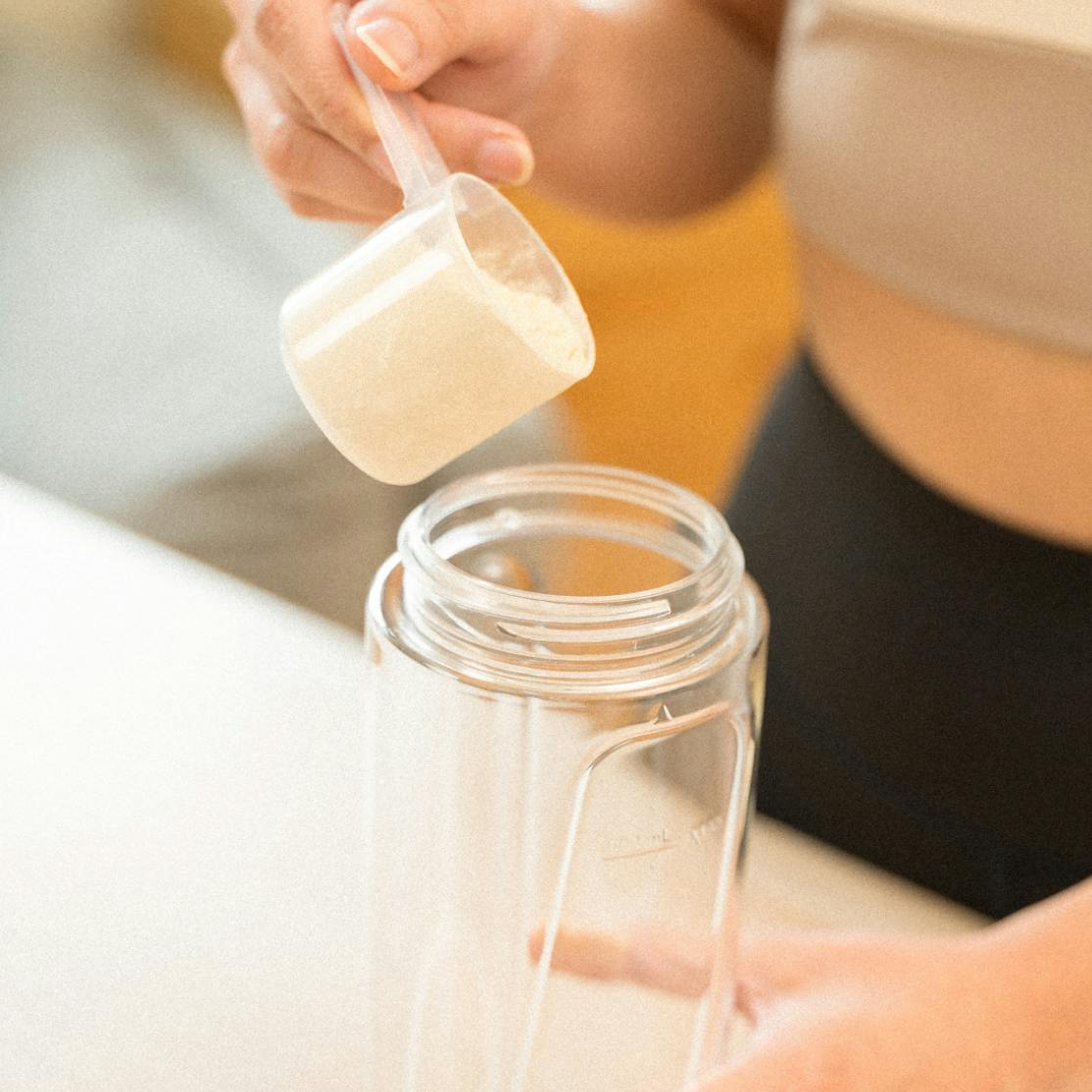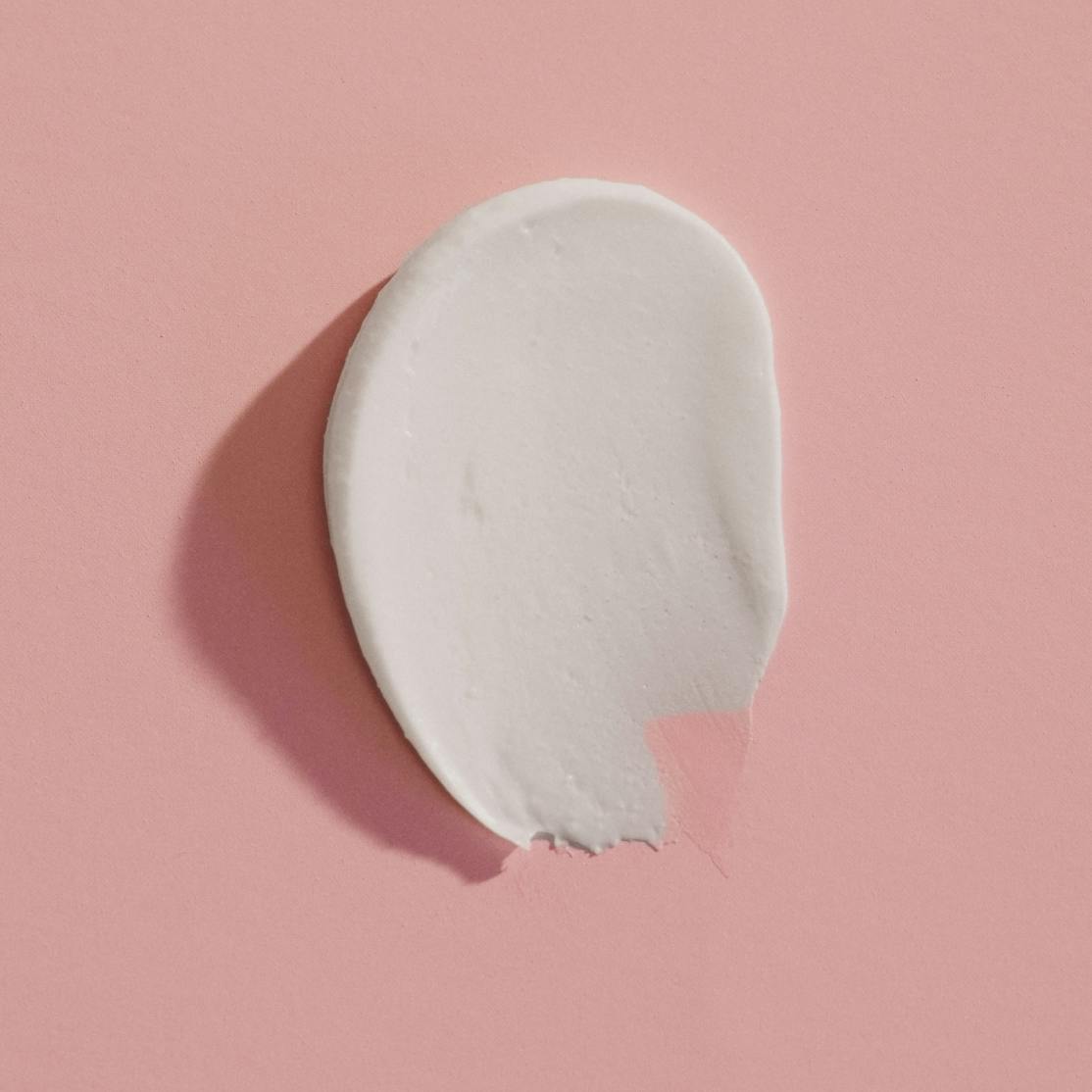Don’t believe the gym bros: Creatine for women is a thing. One of the most researched and safest supplements, this naturally occurring muscle energizer is gaining traction among health-aware, strength-curious peri- and post-menopausal women for its ability to enhance energy, strength, metabolism, and mental clarity. This article answers some of the most common creatine questions we hear at Midi Health, like:
- What can creatine do for women?
- How much creatine should I take?
- What are the side effects of creatine?
We’ll answer all these questions and more. Read on to find out why this supplement has suddenly found its way into the spotlight, especially for women in midlife.
If you’re reading this, we’re willing to bet that an ad or influencer touting creatine for women has popped up in your social media feed sometime in the last few weeks. Long associated with bodybuilders hellbent on bulking up, the supplement has gained traction among an entirely new demographic: women in perimenopause or post-menopause looking to maintain or build lean body mass, and possibly manage other bothersome midlife symptoms, like brain fog and the early rumblings of osteoporosis.
But like so many other supplements that go viral, questions abound. Midi patients are asking us everything from “What does creatine do for women?” to “Is creatine bad for you?” …and we’re thrilled! We’d never suggest anyone simply choose a supplement without doing their research, and just because your favorite fitness influencer can’t stop talking about creatine’s benefits for women doesn’t mean it’s necessarily right for you…though it certainly may be. Consider this your Intro to Creatine class, where we give you the scoop on the supplement that’s on everyone’s lips.
What Is Creatine?
Creatine is an amino acid-based compound produced by the liver, kidneys, and pancreas; it’s also obtained through food, mostly via fish, red meat, and animal milk.
Stored mainly in the muscles—and, to a lesser extent, in the brain, heart, and other tissues—creatine acts as a natural energy source. Not the “Pop out of bed at 6AM feeling wide awake!” brand of energy, but the type that powers you through workouts, enabling your muscles to flex and contract as you lift, run, and jump. It then helps facilitate the much-needed recovery that follows (which is when the muscle-growing magic happens).
If you took biology in high school or college, you might remember learning about ATP, or adenosine triphosphate, a molecule that functions as a battery charger for cells. Creatine facilitates ATP regeneration, helping to keep high-energy-demand organs like muscles and the brain happy.
Creatine is also one of the most well-studied and commonly used dietary sports supplements, known for its ability to help boost muscle mass.

Alas, as is the case with most scientific research, almost all creatine studies have historically focused on men. Marketing has also skewed heavily towards males, hence the giant black plastic tubs with sharp, jagged fonts and images of football players, or— true story—an angry gorilla.
Why Is Creatine Supplementation Gaining Attention for Menopausal Health?
Hannah Cabré, PhD, RDN, a researcher specializing in women’s health at Pennington Biomedical Research Center in Baton Rouge, LA, is a leader in the small-but-growing community of medical experts investigating creatine supplementation in women’s health across the lifespan. Creatine, she says, stands poised to assist with several common midlife health symptoms, including muscle and bone mass, weight maintenance, cognition, and mood.
But a combination of factors makes it tricky for most midlife women to get the amount of creatine needed to keep things humming, including:
- Women produce less creatine than men. Generally speaking, men manufacture about one gram of creatine per day. Women exhibit 70–80% lower endogenous creatine stores compared to males; our bodies simply produce less of it. (That applies throughout the lifespan, Cabré says, not just post-meno.)
- Women consume less creatine. An omnivorous diet (one that contains at least some animal products, like meat or seafood) contributes about one additional gram of creatine a day. However, women tend to consume less animal protein than men, translating to less dietary creatine. Even if you eat tons of fish, chicken, and meat, it’s still difficult to get the amount of daily creatine needed to trigger benefits in strength, metabolism, and more, which research by Cabré and others has shown to be around 5 grams a day. One pound of uncooked beef, for instance, yields about 1–2 grams of creatine.
- Hormonal changes can affect creatine production. The fluctuations and declines in sex hormones like estrogen, progesterone, and testosterone that naturally occur during perimenopause and post-menopause, as well as changes in the brain’s sensitivity to these hormones, can affect the amount of creatine women can produce, utilize, or need to thrive, Cabré says.
All of this makes the menopause transition prime time for creatine supplementation.

What Does Creatine Do For Women?
The most significant benefits of creatine for women during menopause can be divided into four categories:
Improved Muscle Strength and Endurance
Women can expect to lose 3-5% of their muscle mass per decade, starting in their 30s; this loss only accelerates after the Big M hits. (Average age of menopause: 51.)
Because muscle is metabolically active—meaning your body must burn calories to sustain it—this age-related drop in muscle mass usually results in a slower metabolism, weight gain, and insulin resistance, a common condition in which cells lose the ability to efficiently move glucose out of the bloodstream to burn for energy.
Regular strength training is critical for counteracting age-related muscle loss. When you lift dumbbells, pull against resistance bands, or use your body weight in exercises like jumps and squats, you create microscopic tears in your muscle tissue that activate long-term strength gains. Combining strength training with supplemental creatine can amp up those benefits by allowing you to lift stronger and longer.
“It’s not enough to just take creatine,” says registered dietitian, certified athletic trainer, and culinary nutritionist Dana Angelo White, MS, RD, ATC, who has personally taken creatine for years. “You need to take creatine and exercise. You need to lift heavy.”
White credits taking creatine, plus a consistent workout and nutrition routine, with “making it easier for me to keep my body fat lower and muscle mass higher,” she says. “I’m 46, and I know that perimenopause is definitely happening. I can’t help but think I wouldn’t have been able to maintain the lean body mass I have, and keep my body fat from soaring, without it.”
“Creatine can help reduce fatigue during exercise and allows you to exercise to the fullest capacity,” Cabré says. “You can stress your muscles out more, which helps with increasing muscle size.” In fact, in a 2017 Journal of Sports Medicine meta-analysis of 22 studies, women and men over the age of 50 who combined supplemental creatine with strength training gained an average of three pounds more lean muscle tissue compared to those on the same training protocol who took a placebo. Creatine consumers also upped their chest press and leg press strength to a greater degree.

Bone Health Support
One in two women will break a bone due to osteoporosis, a condition characterized by significantly decreased bone mineral density and quality. If that number sounds shockingly high, that’s because it is, surpassing women’s risk of breast cancer, heart attack, and stroke combined.
Because estrogen promotes bone growth, declining levels of the all-star sex hormone during menopause accelerate the loss of bone density in midlife. Up to 20% of bone loss can occur during this stage…unless you take steps to fight back, that is.
Once again, that’s where exercise and creatine enter the scene.
Besides fueling you through longer exercise sessions (more intense exercise leads to increased strength and muscle gains, which leads to increased bone mass), creatine might also have a direct impact on bone strength, as bone cells need creatine to regenerate.
When Canadian researchers randomly assigned 47 postmenopausal women to two groups–resistance training (three days/week for 12 months) plus creatine supplementation or resistance training plus placebo, those in the creatine group were more successful in staving off bone loss at the femoral neck (the tip-top of the thighbone, a hotspot for osteoporotic fractures). The creatine group lost 1.2% of their bone mass density at the femoral neck during the yearlong intervention compared with a nearly 4% loss in the placebo group.
Cognitive Benefits
Unsettling cognitive issues, such as brain fog or poor word retrieval, are among the most frequently reported symptoms in midlife, Cabré says.
Why? Because #menopause.
Estrogen nourishes the hippocampus, the brain’s memory and learning HQ. As estrogen levels fluctuate in our 40s and 50s, the hippocampus misses out on this precious fuel, which helps explain why you couldn’t remember the word for orange at breakfast yesterday.
The stress, mood swings, and subpar sleep that seem to visit so many women during perimenopause can weaken memory, too.
New research suggests that creatine supplementation may improve midlife cognition. The adult brain requires a significant amount of energy to function—it accounts for 20% of the body’s total energy expenditure at rest, despite comprising only 2% of total body mass. Such a demanding organ requires a constant stream of ATP, and emerging data suggests that supplemental creatine may be “a great way to combat cognition challenges, by having extra energy in the brain,” Cabré says.
Supplemental creatine’s effects on memory may be powerful in vegetarian women, likely because they get less creatine from their diets.
Mood Support
Estrogen is a clutch player in the mood game, working arm-in-arm with the nervous system to create and release neurotransmitters that are crucial for emotional regulation and mood stabilization. As estrogen rides the perimenopause rollercoaster, so does serotonin, frequently leading to heightened feelings of sadness and anxiety, irritability and anger, and chronic overwhelm.
At the same time, a growing body of research indicates a link between mood disorders and brain creatine stores. That makes sense considering creatine’s central role in brain energy homeostasis: if the brain doesn’t have all of the supplies it needs to keep you on an even keel (like, say, ohhh, estrogen or creatine), it will likely have a harder time doing so.
Menopause aside, women already have to deal with having lower levels of creatine in the brain, “especially in the frontal cortex, which manages mood, attention, and cognition,” says Midi’s Chief Medical Officer, Kathleen Jordan, MD, adding that creatine’s relationship with mood is one of the supplement’s less recognized benefits. We do know that “dietary creatine is inversely proportional to the incidence of depression,” Dr. Jordan says.
Creatine has been used in studies to try to boost the efficacy of antidepressant therapies. In a small, eight-week randomized controlled trial in the American Journal of Psychiatry in which 52 women with major depressive disorder were assigned to receive escitalopram (Lexapro, a type of antidepressant medication) plus creatine or escitalopram plus a placebo, those in the former group showed significantly greater improvements in their depression rating scores as early as the second week of treatment.
Studies have also shown creatine supplementation can augment the effects of therapy, even without medication.
3 Common Misconceptions About Creatine, Debunked

Myth #1: Creatine is a steroid.
Fact: No, creatine is not a steroid. White says that when clients ask about creatine, “I usually have to start by debunking some myths.” Number one on the Myths List? “That it’s just for bodybuilders, or it’s some sort of anabolic steroid,” White says. “But it is in no way like that.” She attributes the confusion to the longtime association between creatine and bodybuilders.
Myth #2: A creatine supplement will make you gain weight.
Fact: It’s unlikely. Cabré says water retention is possible when people start taking large doses of creatine right off the bat (called a loading dose; more on this in the Dosing Qs section below). For most women starting a creatine supplementation routine, the doses used should not cause bloating.
Myth 3: Creatine is only for high-intensity athletes.
Fact: Not so, says Cabré. Creatine shows promise in women of all levels of training and fitness, even beginners.
Common Creatine Dosing Questions for Women
How much creatine should I take?
Between 3 and 5 grams a day of creatine monohydrate–the most well-studied type of creatine supplement–is the range that tends to pop up in study after study on muscle mass. “Consistent daily supplementation of 3 to 5 grams a day appears to help most women reach saturation and fully support the ATP activity of muscles and brain cells,” Dr. Jordan explains. The optimal dose for brain health may be higher; more research is needed.
What time of day should I take creatine?
As for when to take creatine, which is most frequently taken in powdered or gummy form, it appears timing doesn’t matter much. At least that’s what a group of internationally-renowned sports nutrition science experts say in a 2022 study “Creatine O'Clock: Does Timing of Ingestion Really Influence Muscle Mass and Performance?”
White agrees. “It doesn’t really matter when, as long as you take it consistently. I tend to take mine after a workout, but I take it on off days as well.”
Will creatine make me bloated?
Taking 3 to 5 grams a day should not cause bloating, adds Cabré, who usually recommends women aim for the upper end of that range. Bloating more commonly occurs with something called a “loading dose” schedule, traditionally reserved for competitive athletes, which starts with a much bigger dose (usually around 20 grams, divided into multiple servings a day, for five days) followed by a daily 3 to 5 grams “maintenance” dose.
Is creatine safe for women?
The International Society of Sports Nutrition calls creatine supplementation “safe,” noting that of the more than 680 peer-reviewed clinical trials conducted on creatine supplementation since the ‘70s, involving over 12,800 study participants ranging in age from infants to the elderly, “no clinical adverse events were reported.” Any minor side effects from creatine supplementation were “infrequent and not significantly different from over 13,500 participants consuming placebos in these studies.”
White said the only side effect she’s heard of is occasional temporary GI upset, which is why she suggests starting with 3 grams and seeing how you feel before upping it to 5 grams.
Look for third-party certification when supplement shopping. Examples include the NSF and USP logos. This means “they have had independent testing to ensure that what is in their product is what they say is in it,” Cabré says. “That's not true for the majority of supplements, which aren't regulated by the FDA.”
Who shouldn’t take creatine?
Cabré adds that individuals with kidney failure should not take any supplements without first consulting their medical provider. Creatine supplementation is also not recommended for individuals with bipolar disorder; it’s been linked with increased incidents of manic episodes.
Key Takeaways
- Creatine is an amino acid-based compound produced by the liver, kidneys, and pancreas that can enhance energy, strength, metabolism, and mental clarity.
- Creatine is one of the most well-studied and commonly used dietary sports supplements, known for its ability to help boost muscle mass.
- A combination of factors makes it tricky for most midlife women to get the amount of creatine needed for optimal health from diet alone.
- Consistent daily supplementation of 3 to 5 grams a day of creatine monohydrate may be all women need to see health improvements if paired with a consistent strength training routine.
If you’re in perimenopause or menopause and want guidance from clinicians who specialize in women’s midlife health, book a virtual visit with Midi today.
Hormonal change is at the root of dozens of symptoms women experience in the years before and after their period stops.
Our trained menopause specialists can help you connect the dots to guide you towards safe, effective solutions.
Whether you need personalized guidance or a prescription routine to tackle symptoms—including brain fog, hot flashes, sleep trouble, mood swings, and weight gain—we’ve got you covered. Learn more here.
Midi’s mission is to revolutionize healthcare for women at midlife, wherever they live and whatever their health story. We believe that starts with education, to help all of us understand our always-changing bodies and health needs. Our core values guide everything we do, including standards that ensure the quality and trustworthiness of our content and editorial processes. We’re committed to providing information that is up-to-date, accurate, and relies on evidence-based research and peer-reviewed journals. For more details on our editorial process, see here.








